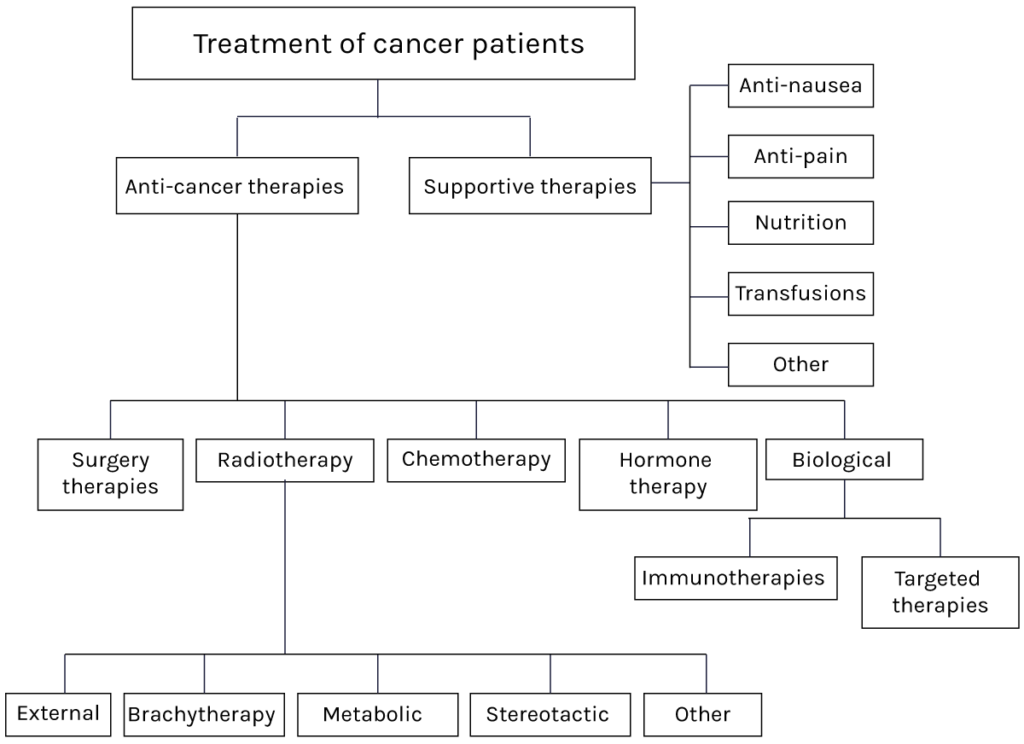As can be seen in FIGURE 5, the treatments available for cancer patients can be divided into:
- those that eliminate or fight the disease, which are called anti-neoplastic (anti-tumor) therapies, and
- so-called supportive therapies, which aim to strengthen the patient’s organism, relieve his symptoms and provide physical and psychological support, THE IMPORTANCE OF SUPPORTIVE THERAPIES

Surgery: this is the chief discipline, the approach that enables most tumors to be cured. Surgery is most effective when the tumor is in an initial stage, localized. However, it also plays an important role in the palliative treatment of particular conditions, such as intestinal blockage, orthopedic surgery for bone fractures caused by metastases, etc.
Radiotherapy in its various forms (external radiotherapy, stereotactic radiotherapy, brachytherapy, metabolic radiotherapy). Like surgery, it acts locally, not in conditions of disseminated disease. Small tumor masses that are circumscribed (i.e. confined to a limited space) can be cured by radiotherapy alone. Radiotherapy can also be used to eliminate tumor residues that surgery has been unable to remove completely (R-1 or R-2 surgical result) (SURGICAL OPERATION). It is also very effective in reducing the pain or other complications caused by metastases, as long as the metastases are circumscribed (a classic case is that of painful bone metastases).
Chemotherapy: in use for 70 years, this is still indispensable, alone or in combination with other therapies, in the treatment of almost all tumors. It is generally used to prevent disease recurrence after surgery (adjuvant therapy), helping to cure tumors in 10-20% of patients or more (POSSIBLE ADJUVANT (PREVENTIVE) THERAPY AFTER SURGERY).
- Radiotherapy : In the advanced metastatic phase of the disease, radiotherapy can prolong the patient’s life for months or years and improve its quality. It does cause major side-effects, though there may be very great differences in terms of tolerability between one radiotherapy regime and another.
Hormone therapy is widely used, as it has far less serious toxic effects than chemotherapy. However, it is effective only in so-called hormone-dependent tumors: i.e. those of the prostate, breast, uterus and ovary. Like chemotherapy, it can be used both to prevent relapses (adjuvant therapy) and in palliative (not curative) therapy in the advanced phase of cancer.
Biological therapies: these include molecular targeted therapies and immunotherapy. Though developed only recently, they have already proved very effective and offer promising prospects for the near future (THE NEW BIOLOGICAL THERAPIES).
For information on supportive therapies, see section (THE IMPORTANCE OF SUPPORTIVE THERAPIES).
